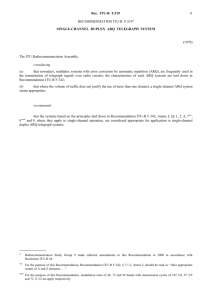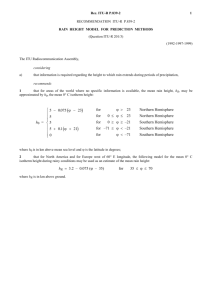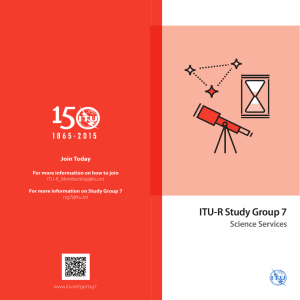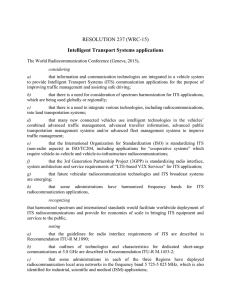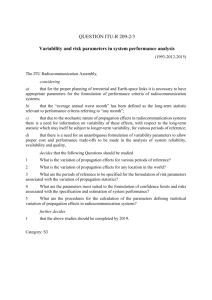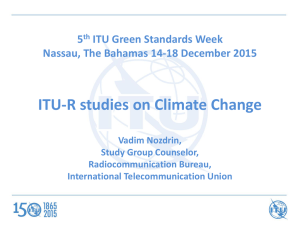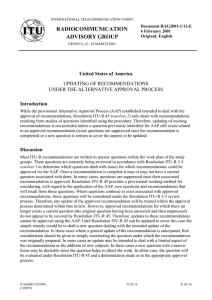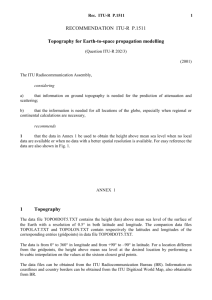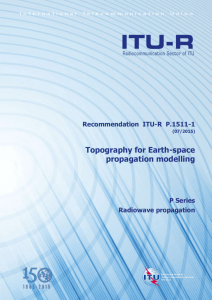Word - ITU
advertisement
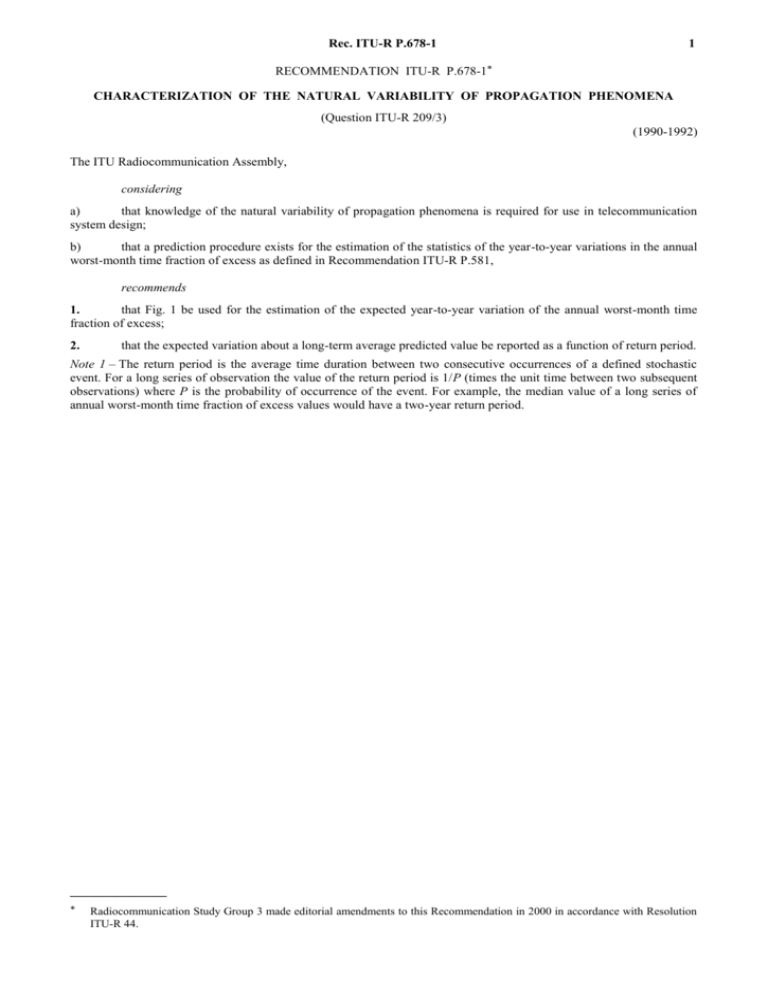
Rec. ITU-R P.678-1 1 RECOMMENDATION ITU-R P.678-1* CHARACTERIZATION OF THE NATURAL VARIABILITY OF PROPAGATION PHENOMENA (Question ITU-R 209/3) (1990-1992) Rec. 678-1 The ITU Radiocommunication Assembly, considering a) that knowledge of the natural variability of propagation phenomena is required for use in telecommunication system design; b) that a prediction procedure exists for the estimation of the statistics of the year-to-year variations in the annual worst-month time fraction of excess as defined in Recommendation ITU-R P.581, recommends 1. that Fig. 1 be used for the estimation of the expected year-to-year variation of the annual worst-month time fraction of excess; 2. that the expected variation about a long-term average predicted value be reported as a function of return period. Note 1 – The return period is the average time duration between two consecutive occurrences of a defined stochastic event. For a long series of observation the value of the return period is 1/P (times the unit time between two subsequent observations) where P is the probability of occurrence of the event. For example, the median value of a long series of annual worst-month time fraction of excess values would have a two-year return period. _______________ * Radiocommunication Study Group 3 made editorial amendments to this Recommendation in 2000 in accordance with Resolution ITU-R 44. 2 Rec. ITU-R P.678-1 FIGURE 1 Dependance of WR /PW on Q for several value of the return period R (years) 20 15 R = 50 10 8 20 WR /PW 6 4 10 3 5 2 1 2 1.25 0 3 4 5 6 7 8 9 10 11 12 Q PW: average annual worst-month time fraction of excess WR: annual worst-month time fraction of excess associated with a return period of R years Q: worst-month quotient, a propagation climatic factor (see Recommendation ITU-R P.841) Note 1 – PW, WR, Q should be referred to the same pre-selected threshold value. D01-sc Figure 1/678-1...[D02-sc]
